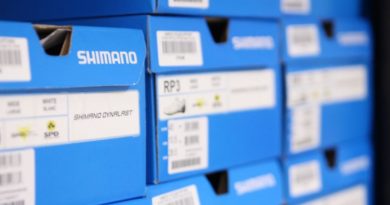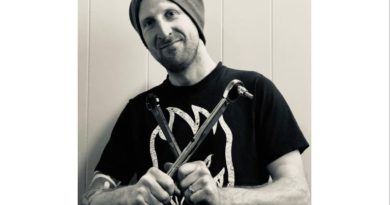Fitter’s Corner; bike fit and your bike shop
In the first of a series with professional bike fitters we chat with Jon Wild, learn why discipline and perseverance are key to drawing bike fit customers from far and wide…
How did you get started as a bike fitter?
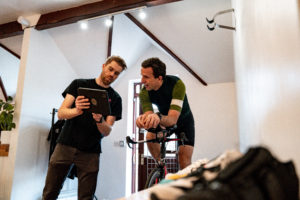 I’ve been obsessed with cycling for a long time, and my original career plan was to train as a mechanical engineer. I think at some point the plan was to become a bicycle designer, but I’ve still never seen that job title advertised.
I’ve been obsessed with cycling for a long time, and my original career plan was to train as a mechanical engineer. I think at some point the plan was to become a bicycle designer, but I’ve still never seen that job title advertised.
I got into one of the top universities for engineering in the UK and began a degree in mechanical engineering. I soon started to realise that mechanical engineering is basically a degree in applied mathematics. It was so far removed from how humans ride bikes that I couldn’t see a future in it for me. The idea of dropping out of such a good university was tough but I knew I had to leave.
I searched around for sports engineering degrees, but nothing really appealed. Then I found Sport and Exercise Science and couldn’t believe it. It was perfect. My assignments were on topics like “knee injuries in cycling”, my work experience was at a world leading biomechanics facility and my dissertation was on oval chainrings. I collated thousands of cycling related research articles and left university with a belief that I of course knew everything.
As I was finishing up my final year I got a part time job at a local bike shop and offered to design a website for them in my spare time. In exchange they bought me what I think was called a Bikefit starter kit from I-Ride. It had a training manual, a laser, a goniometer and about a thousand wedges and bolts. It was a tiny shop, so I would do them after hours in the middle of the showroom. Looking back, I was completely clue less.
“Reading all the scientific literature on cycling does not make you a great bike fitter. It just helps you waffle on about statistical significance and averages.”
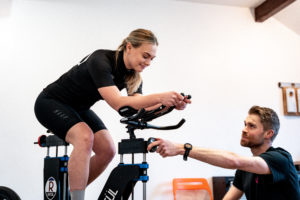
Granted I had a great knowledge of physiology, anatomy, biomechanics and strength and conditioning, but the way that a bike fit was seen back then largely ignored all of that anyway and just fixated on a plumb line, a goniometer and some Italian folklore.
My wife and I decided to move to Canada. I found a job where the manager really saw the potential for bike fitting and in fact had three existing members of staff who had done bike fit courses. She hired me on the condition that I would stay for X number of months, and they would pay for my bike fit courses. Bizarrely enough all those other members of staff who had done the bike fit course quickly delegated all the bike fits to me and I was chucked in at the deep end. It was a big store selling a lot of bikes. I think every bike sold included some level of bike fit so I quickly had a full diary.
It’s quite hard for a lot of people to gain experience in bike fitting as most of the time it’s a salesperson’s second job to do every now and again. I had the privilege of it occupying most of my working week quite early on.
“There’s no substitute to watching thousands of cyclists pedal a bike in front of you.”
So, to become a solver of complex bike fit problems you simply need experience?
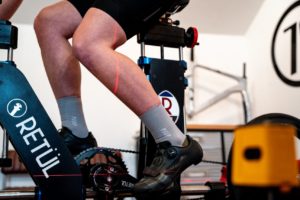 It’s years of continuous education, reading, listening, observing, and questioning. Some things you’ll learn 20 times before it clicks into place. I think this is a never-ending journey. I’ve been on some fantastic educational courses and had the privilege to be mentored by some of the world’s best bike fitters, but I still have bike fits where I think “huh, I haven’t seen that before!”.
It’s years of continuous education, reading, listening, observing, and questioning. Some things you’ll learn 20 times before it clicks into place. I think this is a never-ending journey. I’ve been on some fantastic educational courses and had the privilege to be mentored by some of the world’s best bike fitters, but I still have bike fits where I think “huh, I haven’t seen that before!”.
There’s an element of community around bike fitting it seems and to be engaged is to learn?
I think being part of a professional body like the International Bike Fitting Institute helps a lot. It’s a brave step to take when you have to openly declare to the world what you know and how much experience you have and have it peer reviewed. Fitters are awarded a level from 1 to 4 and until recently it was designed to be exponentially harder to climb up the levels. So, you have bike fitters who have 30+ years of experience at level 4 and you’re there highlighting that relatively speaking you’ve just started. It’s respectable to say “I am open to developing my knowledge and experience and I want to keep improving”.
What’s the biggest change you’ve seen in the bike fitting biz?
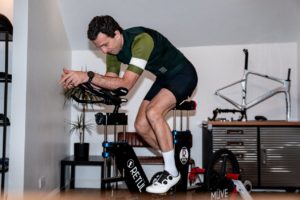 Most recently it’s the number of new cyclists. Instead of questions about cleat position it was people not even aware that you could get shoes with cleats on them. There’s nothing I love better than sharing in the excitement of someone who’s just getting into cycling. It’s so great that bike fit is talked about so much nowadays that it’s often a new cyclist’s first step. Starting out you generally have no expectations of what to expect so it’s easy to be put off by an uncomfortable pair of shoes or a badly designed saddle by assuming “that’s the way it is”. I think we lose so many new and enthusiastic cyclists due to discomfort. If we’re going to maintain this boom and keep the cycling industry thriving, people need bikes which they enjoy riding so much that they wear them out.
Most recently it’s the number of new cyclists. Instead of questions about cleat position it was people not even aware that you could get shoes with cleats on them. There’s nothing I love better than sharing in the excitement of someone who’s just getting into cycling. It’s so great that bike fit is talked about so much nowadays that it’s often a new cyclist’s first step. Starting out you generally have no expectations of what to expect so it’s easy to be put off by an uncomfortable pair of shoes or a badly designed saddle by assuming “that’s the way it is”. I think we lose so many new and enthusiastic cyclists due to discomfort. If we’re going to maintain this boom and keep the cycling industry thriving, people need bikes which they enjoy riding so much that they wear them out.
As a bad fit can cause problems, how can customers be sure of landing with a reputable fitter?
I think the International Bike Fitting Institute solves this problem. They are a professional body set up to help consumers find quality bike fitters and give bike fitters a framework to develop themselves. If a fitter is signed up they have openly declared what they know and what they don’t.
Are customers loyal to a bike fitter and does repeat business happen?
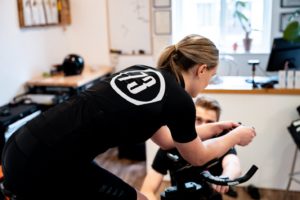 I do see people year after year for a check-up or to set up a new bike, however I think the term loyal is a weird one in a business sense. If you do good work people will appreciate it and will tell all their friends. That’s all you can hope for and it’s not a reflection on you if a customer does go elsewhere next time. I think the bike industry has got a sensitive ego when it comes to loyalty. If you went to a nice restaurant and had a great time, great food, great service you would certainly go back. You also might try a different restaurant the following week end and have a great time there too. It’s not a reflection on the first restaurant as to why you shopped online one week and visited a different restaurant the other.
I do see people year after year for a check-up or to set up a new bike, however I think the term loyal is a weird one in a business sense. If you do good work people will appreciate it and will tell all their friends. That’s all you can hope for and it’s not a reflection on you if a customer does go elsewhere next time. I think the bike industry has got a sensitive ego when it comes to loyalty. If you went to a nice restaurant and had a great time, great food, great service you would certainly go back. You also might try a different restaurant the following week end and have a great time there too. It’s not a reflection on the first restaurant as to why you shopped online one week and visited a different restaurant the other.
What’s the furthest distance you’ve had a customer travel?
I’d say a four-hour drive. Frequently people will travel 120 to 200 miles. It’s never from advertising; these people generally seek out a bike fitter that they want to work with and travel past the doors of many others on the way. It’s always a shock when people turn up having left at 5am to make the 9am appointment.
Do retail stores understand the commercial opportunity that comes with a truly skilled bike fitter?
I think the rarity of a bike fitter role on the CI.N jobs board answers this. Unfortunately, shops don’t look to hire a bike fitter. Most full-time bike fitters I know are self-employed. Not to dissuade anyone but I think to become a bike fitter full time takes a lot of work. You can’t just offer up the services and people will come. Success comes from reputation and experience.
How does a business hire and get the best value out of an experienced bike fitter?
To answer your question with a bunch of questions: do you want to hire someone fresh and help them develop into an experienced bike fitter or do you want to hire an already experienced fitter? Do you want them in-house or do you just want to collaborate/start a mutual referral? Do you want to sell more bikes / products through bike fit associated services or do you want the labour revenue from the bike fit?
For those keen to discuss bike fit in person with Jon, or to book a bike fit, click here.
Cycling Industry News previously spoke with Tony Corke, who outlined how bike shops can monetise aerodynamics. To read more about the subject, click here.

